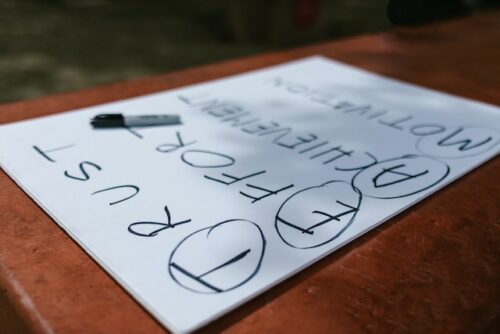The problem of forgetting
Have you noticed that soon after learning a new study material you remember very little of it? The less you have a chance to rehearse what you have learned, the greater the speed with which the newly acquired knowledge evaporates from your memory. It has long been known that repetitio est mater studiorum (Latin: repetition is the mother of learning). In other words, the best way to remember is to make repetitions of the learned material. However, you might find it quite frustrating when you have to repeat old subjects while your teachers or supervisors still want you to know more and more new material. When are you supposed to find time for both? Usually, you find a solution in-between. You spend most of your time learning new things, forgetting what you have learned earlier, and rehearsing only material that is needed for current exams or other emergencies. The net result is disastrous! Most of your time goes to waste as you forget most of the learned knowledge. Naturally, you gain general understanding of the studied material, but understanding is also based on memory traces and is equally volatile. It is only a question of time when you irreversibly lose most of your investment in learning. Is the above presented situation inevitable? The pressures of the day do not really let you rehearse what you have learned earlier. The educational systems throughout the world are organized in a way that penalizes those who do not master the new material. You are pushed into a nonsensical situation. You are truly forced to waste your time and … waste your life. SuperMemo makes it possible to reduce the time necessary for repetition several times, and it shall solve some of your learning problems.
And if you are under no pressure to learn new things … so much the better. SuperMemo will help you organize your memory. Even if you decide to spend only 3 minutes per day on learning!
Most of all, you shall try to experiment with … The three most important things I learned today! Store your newly acquired wisdom in SuperMemo and see it change your life!
SuperMemo solves the problem of forgetting
Once you learn a fact, you need to refresh your memory shortly before forgetting takes place. However, it may be very difficult to predict the moment of forgetting. Some facts are forgotten faster, other can stay in your memory for years. Luckily, there are some regularities in the process of forgetting that can help you optimize the timing of repetitions. Once you learn a collection of new pieces of knowledge, let us call these pieces items, you can observe a slow but regular decline in the proportion of items you remember. If you employ the computer to plot the forgetting curve, you can easily predict when a given proportion of items will be forgotten. If you decide to constantly remember at least 90% of the material, you might try to schedule your repetitions at the point when you still remember 90% of what you have learned. It is known that you will still remember most of the material after a much longer period of time. However, there is no better way! The process of forgetting is random in nature, and you cannot easily say which item will last longer and which will be forgotten sooner. The picture becomes more complicated if you realize that different items have different difficulty and require different inter-repetition intervals. Moreover, items that have already been repeated once or twice, need much less refreshing than those that have just been learned.
Are you getting lost? Do not despair. There has been a lot of effort put into finding out the regularities in the process of learning. As a result, effective algorithms have been developed that are able to quickly determine the best possible interval for an item independent of its difficulty and the number of earlier repetitions. Those algorithms have been implemented as a computer program known as SuperMemo (available for Windows, Palm, Pocket PC, etc.). SuperMemo can supervise your repetitions without much involvement on your part. SuperMemo is not painless, because it does not allow you to learn with no effort at all. However, it can be shown in strictly scientific terms that SuperMemo helps you increase the speed of learning many times over. Indeed, it makes it possible to closely approach the maximum natural capacity of the human brain to store and retain information. In theory, over a period of an average lifetime, SuperMemo makes it possible to learn 10-50 times faster than conventional methods, and makes it possible to reach knowledge retention of 95% or more! SuperMemo minimizes the effects of forgetting and the overall time needed for learning. This is done by scheduling repetitions in carefully determined intervals of time called optimum intervals. These optimum intervals are calculated on the basis of two contradictory criteria:
- Intervals should be as long as possible to obtain the minimum frequency of repetitions, and to make the best use of the so-called spacing effect, which says that longer inter-repetition intervals, up to a certain limit, produce stronger memories
- Intervals should be short enough to ensure that the knowledge is still remembered
In practice, these two criteria translate into the following one:
Intervals should be as long as it is necessary for a selected small proportion of knowledge be forgotten. This proportion (called the forgetting index) can vary from 3% (for slower and very exact learning) to 20% (for faster learning characterized by a low retention of knowledge)
If the forgetting index drops below 3%, the knowledge acquisition rate becomes unacceptably low. On the other hand, the acquisition rate peaks at the forgetting index of about 20%. Above that value, both the retention and acquisition rate decrease. Note, that one can compare traditional learning, in which repetitions are arbitrarily set in time, to optimized learning with the forgetting index well above 50%. Such learning is not only slow, but above all, the retention of knowledge may be unacceptably low. In consequence, instead of remembering things which are important, you only remember things which are easy to remember or those that receive per-chance repetition while reviewing other parts of the material. As optimum intervals differ for different pieces of knowledge, SuperMemo requires that the learned material be split into smallest possible pieces called items. If items were to be repeated collectively, e.g., as chapters of a textbook in traditional learning, the overall optimal intervals would have to be as short as the optimal intervals for the most difficult subitem in the set. This would make learning even less effective than learning by means of classical methods! Splitting knowledge into small pieces makes it possible for SuperMemo to determine optimum intervals for each item independently. Simplicity of items is perhaps even more important for cytophysiological reasons. Simple items make it possible for the right neuronal synapses to be fully stimulated at the right time. Complex items result in trains of diversified nervous impulses that result in unpredictably intricate memory patterns at the cellular level. This makes optimization of learning difficult or not possible at all. Using optimum intervals and the simplicity of items are a formula for high speed and high retention in learning. However, the speed of learning is not the most important element of education. It is the quality of knowledge that counts most. SuperMemo allows you to learn very fast, but it is still your responsibility to properly choose the learning material prepared by yourself or by a third party
Summary
- The key to effective learning is in minimizing the number of repetitions necessary to retain knowledge in memory
- SuperMemo minimizes the learning time by approximating optimum intervals (i.e. intervals that should separate individual repetitions)
- Knowledge memorized with SuperMemo must be split into smallest possible pieces called items
- When using SuperMemo, you must not forget that the quality of learning will depend on the selection of the material, and the way it is split into individual items



